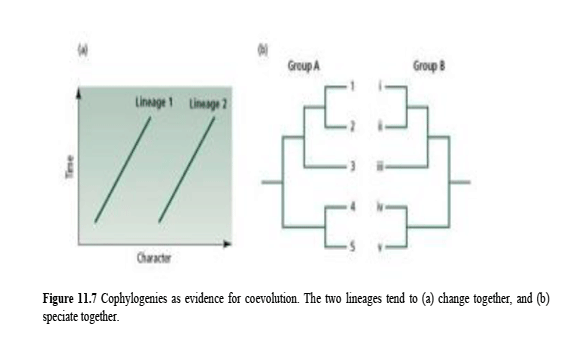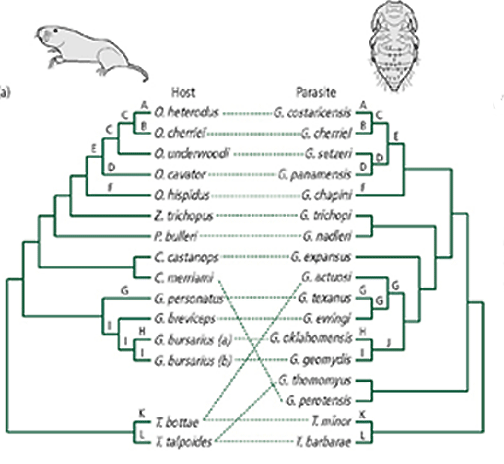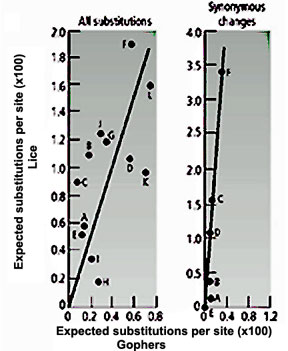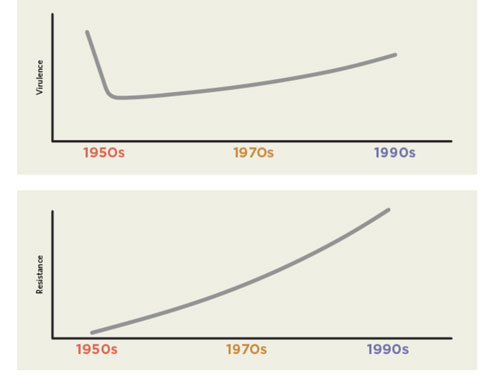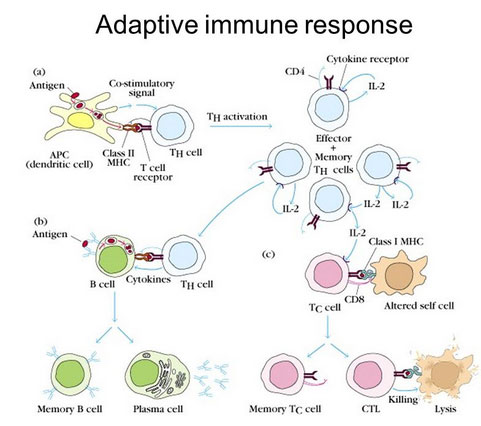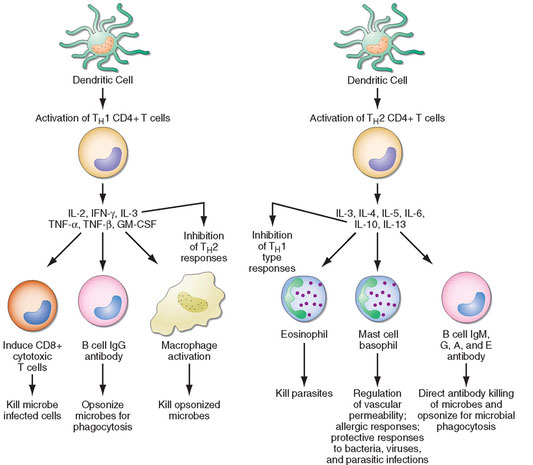Adaptation, an ecological perspective
Organisms have to cope in situations that involve complex and several relationships with other organisms. Others have liken this to a fighting jet, changing its defenses, while under attack from several enemies. Suffice it to say some organisms have evolved relationships resembling shaky truces. Others have engaged in a race where new favorable mutations can sometimes give one species a survival edge, however temporary.
We fail often to realize just how important and persuasive this "biological" component of our environment is.
Important Example: Current theory on Pre-eclampsia
One of the most important co evolutionary relationships that occur actually involve parents and young.
"Pregnancy can be the most wonderful experience life has to offer. But it can also be dangerous. Around the world, an estimated 529,000 women a year die during pregnancy or childbirth. Ten million suffer injuries, infection or disability."
One of the potential problems encountered is the threat of pre-eclampsia (preeclampsia).
https://www.nytimes.com/2006/03/14/health/silent-struggle-a-new-theory-of-pregnancy.html
In pre-eclampsia there is a sudden rise in a pregnant woman’s blood pressure, usually diagnosed during the 20th week, accompanied by increased protein in her urine and swollen hands and face. It can also affect her brain, liver, and kidneys. Until the pregnant person’s blood pressure reduces, they are at a greater risk of stroke, severe bleeding, separation of the placenta from the uterus, and seizures. The condition affects around 5 percent of pregnancies and is a leading cause of pregnancy- and birth-related deaths.
The basic theory: .
"Dr. Haig proposed that pre-eclampsia was just an extreme form of a strategy used by all fetuses. The fetuses somehow raised the blood pressure of their mothers so as to drive more blood into the relatively low-pressure placenta. Dr. Haig suggested that pre-eclampsia would be associated with some substance that fetuses injected into their mothers' bloodstreams. Pre-eclampsia happened when fetuses injected too much of the stuff, perhaps if they were having trouble getting enough nourishment."
It is based on the work of Robert Trivers . Dr. Trivers argued that natural selection should favor parents who can successfully raise the most offspring. For that strategy to work, they can't put too many resources into any one child. But the child's chances for reproductive success will increase as its care from parents increase.
The theory incorporates ecological theory on reproductive effort, seen as a set box of resources, whose contents can be distributed piecemeal or all at once. To one child or to many.
Example: Struggle easily visioned between fledging birds and parents.
Basic evidence for theory
Production of excessive antiangiogenic (blood vessel) factors have been found in women experiencing pre-eclampsia. The first factor identified was sFit-1. Excessive placental production of antiangiogenic factors such as Flt-1 and sEng, are liberated into the maternal circulation inducing the clinical syndrome. Pre-eclamptic placentas show over expression of sFlt-1 and sEng. Their levels are increased in the serum of preeclamptic women weeks before the appearance of overt clinical manifestations of the disease and they correlate with disease severity (Levine et al.2006b).
The basic theory has been modified through time.
Example. A study following 750,000 live births in the Danish National Patient Registry and all registered medical diagnoses for up to 30 years after birth. Offspring exposed to pregnancy-induced hypertension (PIH) in trimester 1 had significantly reduced overall later-life disease risks, but increased risks when PIH exposure started or developed as preeclampsia in later trimesters. Similar patterns were found for first-year mortality.
These results suggest that early PIH leading to improved postpartum survival and health represents a balanced compromise between the reproductive interests of parents and offspring, whereas later onset of PIH may reflect an unbalanced parent-offspring conflict at the detriment of maternal and offspring health.
Citation: Hollegaard B, Byars SG, Lykke J, Boomsma JJ (2013) Parent-Offspring Conflict and the Persistence of Pregnancy-Induced Hypertension-Paper link
Other evidence.
There are other genes involved: One of the most striking examples is a gene called insulin growth factor 2 (Igf2). Produced only in fetal cells, it stimulates rapid growth.
Normally, only the father's copy is active. To understand the gene's function, scientists disabled the father's copy in the placenta of fetal mice. The mice were born weighing 40 percent below average. Perhaps the mother's copy of Igf2 is usually silent because turning it off helps regulate normal growth of a fetus.
On the other hand, mice carry another gene called Igf2r that interferes with the growth-spurring activity of Igf2. This may be another maternal defense gene. In the case of Igf2r, it is the father's gene that is silent, perhaps initially evolved as a way for fathers to speed up the growth of their offspring. If the mother's copy of this second gene is disabled, mouse pups are born 125 percent heavier than average.The action of these genes brings to the discussion, conflicts between a father and mother's interest. This conflict is not as important as the conflict between a mother and child for this disease, but still significant.
In evolutionary theory, the conflict between parents is very important, as it is one of major causative factors postulated for the large number of imprinting genes found in some groups.
Some interesting new research links this condition to immune differences between mother/ father and mother / child.
from:Sandovici, I et al. The Imprinted Igf2-Igf2r Axis is Critical for Matching Placental Microvasculature Expansion to Fetal Growth. Developmental Cell; 10 Jan 2022: DOI: 10.1016/j.devcel.2021.12.005 and
https://www.cam.ac.uk/research/news/battle-of-the-sexes-begins-in-womb-as-father-and-mothers-genes-tussle-over-nutrition“The study suggests that maternal-fetal sharing of HLA alleles increases the likelihood of pre-eclampsia, and that these associations depend on the level of exposure to the paternal seminal fluid prior to pregnancy.
For mothers who have low cumulative exposure to paternal seminal fluid prior to pregnancy, increased sharing of Class 1 alleles increases the likelihood of preeclampsia over 4-fold.”
Prof. Triche says that the underlying biology of these findings appear to link to the way the mother’s immune system views the “foreign genes,” first when they are introduced by the father’s sperm and then in the fetus.
from http://nature.com/articles/doi:10.1038/ng.3895
Dr. Morgan and colleagues carried out a genome-wide association study (GWAS) of 4,380 children born to mothers who developed preeclampsia during pregnancy, and of 310,238 whose mothers did not develop the condition (the controls). These studies rapidly scan the genomes or complete sets of DNA of large numbers of people to find variants in the genetic code that are linked to particular diseases They identified two previously unknown DNA variants that were significantly linked to pre-eclampsia.
The authors note that the variants are quite common and occur in about half the population. However, they are not enough to cause pre-eclampsia on their own; they simply raise the risk.
For those interested in reading further, additional references. Reference one. ---------------Reference two
The greater interest for this course is in relationship between a pathogen/parasite and its host.
The formal study of what is now known as co-evolution, focused initially on competitive relationships and then predation-prey relationships. To examine the evolutionary interactions between pathogens and parasites is a relatively new endeavor. http://evolution.berkeley.edu/evolibrary/article/evo_33

